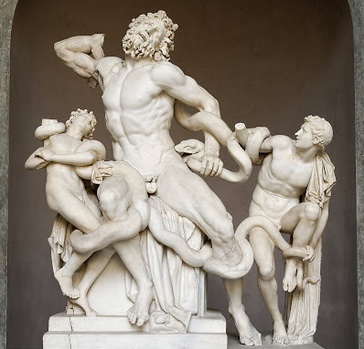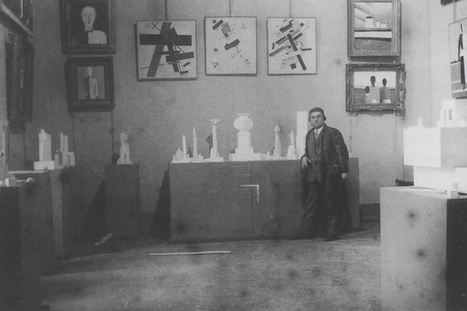Calls to Clean up Russian Art Market
Jul 16th, 2014 | By Ivan Lindsay | Category: Journal
The Russian Avant Garde is full of fakes. This is common knowledge and anyone who buys such works with no provenance at a fraction of their real value should not be suprised when they discover they have bought fakes. The real paintings are well documented and very expensive. If you are uncertain then a quiet word with a leading expert such as James Butterwick in London will suffice to see if something is real or not.
Actually fakes and near-misses are common in all areas of the art market and caution has to be exercised at all times. In Old Masters, for example, the leading masters such as Rubens had large studios of assistants. Sometimes they collaborated with their students, sometimes they just did the sketch for their students to paint the large work. Sometimes they even signed their student’s work. Then for centuries afterwards it was standard practise for aspiring artists to learn their craft by making copies of the great masters works. So with Rubens it might be all by the master, it might be partly by the master, it might be a pupil with the master’s signature or it might be a good copy by a later hand. Vermeer made an early living by copying Florentine paintings as can be seen by the recently sold study of ‘St Praxedis.’
And sculpture has the same challenges. The famous Greek sculpture, for example, ‘Laocoon and his sons’ was only rediscovered in Rome in 1506. Michelangelo helped excavate it. When asked to restore it, he famously refused saying he did not have the talent of the ancient Greeks. But now some people think that Michelangelo sculpted the Laocoon himself.

‘Laocoon and his sons,’ Marble, possibly Greek Hellenistic Baroque, possibly Roman, possibly 16th century and by Michelangelo. Discovered in Rome in 1506.
As a major Malevich show opens in London, claims grow that the Russian avant-garde market is still plagued by fakes. Sophie Kishkovsky has a look at the Russian situation in the Art Newspaper as below:-
Art Newspaper News, Issue 259, July-August 2014
Published online: 16 July 2014
As the first major Malevich retrospective exhibition in 30 years and the first ever in the UK opens today, 16 July (until 26 October), at Tate Modern in London, disputes are continuing in Russia about the authenticity of many of the works attributed to the artist that are currently in circulation in the wider art market. Art dealers and curators are calling for an overhaul of the way in which Russian avant-garde works are researched and authenticated, amid ongoing allegations that the art market is awash with fakes.
(The Tate, meanwhile, is at pains to point out that, “as with all of our exhibitions, we have undertaken thorough research for our Malevich retrospective [“Malevich: Revolutionary of Russian Art”]. The works we chose have clear provenance and proven track records in their histories of being collected, published and exhibited.”)
The latest attribution row centres on a book by Patricia Railing, an art historian who has studied Malevich since the 1970s. The works inMalevich Paints: the Seeing Eye, which was published last year, come from unidentified private collections as well as institutions including the Stedelijk Museum in Amsterdam and the Museum of Modern Art in New York.
Railing, who is the president of the International Chamber of Russian Modernism (Incorm), an affiliation of Russian and European art historians, writes in the book: “For those who may still have a lingering doubt, may they be assured that all the works coming from private collections and reproduced for the first time in this study have been subjected to rigorous scientific analyses that prove that they are at least 60 years old,” with “no false ageing… all the paintings reproduced in this study are by Kazimir Malevich”.
James Butterwick, a London-based art dealer who specialises in the Russian avant-garde, disagrees. He believes that the book includes a number of debatable works. Butterwick says: “Of the illustrations in Malevich Paints, eight of the oils—there is insufficient detail in some of the works on paper—are probably not by Malevich; two are definitely not.”
Butterwick also says that, as well as publishing books, members of Incorm (including Railing) have issued certificates of authenticity for works by Malevich, most of which he disputes. “My main argument with these certificates is that they are not recognised by the wider art market,” he says.
Railing, however, denounces the dismissal of works on the basis of photographs. She says that some members of Incorm do carry out analyses of works, but denies that this is a business. “I am a private art historian [specialising in] Malevich and Popova,” she says, adding that she works with owners who wish to know more about the pieces they own, not buyers. “Art is not a commodity, although the market treats it as such.”
The turmoil of the Russian Revolution and the oppression of artists in Stalinist Russia, Railing says, meant that numerous works by avant-garde artists disappeared, and could resurface. She suggests that this would not necessarily be welcomed by market players. The latest dispute follows accusations that a recent exhibition in Mantua, Italy—“Avanguardie Russe: dal Cubofuturismo al Suprematismo”—included works that may also be fakes (The Art Newspaper, March, p8).
The problem, according to Marina Molchanova, the owner of Moscow’s Elysium art gallery and a vice-president of the Moscow-based International Confederation of Antiquarians and Art Dealers of the CIS and Russia, is the absence of catalogues raisonnées for most artists and the appearance of dubious ones for others, with the result that even diligent scholars can perpetuate fakes. She says that the problem is worse in the West than in Russia, and is calling for “an international expert council to be created, to work on artists who worked in Russia and abroad”, bringing together art historians from Russia and the world’s leading museums.
Railing says that Incorm is developing a new protocol on art authentication that divides tasks between scientists, conservators and art historians, and stresses that scientists run tests but do not make the final judgement.
Butterwick, meanwhile, tells us that he was so frustrated by the situation about fakes that he had been ready to give up on speaking out. “The level of criminality in the Russian avant-garde market is just too great—it could be as much as $500m—for one person to take on,” he says, adding that he is backing a new group of experts, the Russian Avant-Garde Research Project. The project, which aims to “support both technological and archival and art-historical research of the Russian avant-garde”, was informally announced at a meeting in Trinity College at the University of Oxford in April. Peter Aven, the Russian billionaire banker known for his collection of Russian avant-garde art, is one of the project’s financial backers.
Konstantin Akinsha, a scholar of early 20th-century Russian art and a trustee of the new group, says that although collectors, including Russians, are getting better at avoiding fakes, “there are [still] too many fakes in Russia and in the West. Desperate efforts to sell them, or to exhibit them, are continuing.”
The situation ultimately affects artists’ legacies. “Poor Kazimir Severinovich [Malevich],” says Natalya Alexandrova, a senior curator of Modern paintings at the Tretyakov Art Gallery in Moscow. “He could not possibly have painted so much in his lifetime.”

